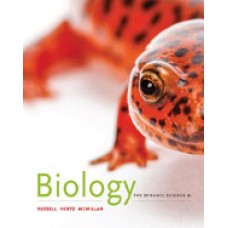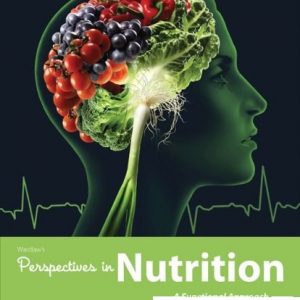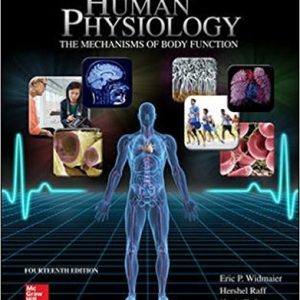Instant download Test Bank for Biology The Dynamic Science, 4th Edition pdf docx epub after payment.

Product details:
- ISBN-10 : 9781305389892
- ISBN-13 : 978-1305389892
- Author: Peter J. Russell; Paul E. Hertz; Beverly McMillan
Russell/Hertz/McMillan, BIOLOGY: THE DYNAMIC SCIENCE 4e teach Biology the way scientists practice it by emphasizing and applying science as a process. You learn not only what scientists know, but how they know it, and what they still need to learn. The authors explain complex ideas clearly and describe how biologists collect and interpret evidence to test hypotheses about the living world. Throughout, They provide engaging applications, develop quantitative analysis and mathematical reasoning skills, and build conceptual understanding.
Table of contents:
- Ch 1: Introduction to Biological Concepts and Research
- 1.1: What is Life? Characteristics of Living Organisms
- 1.2: Biological Evolution
- 1.3: Biodiversity and the Tree of Life
- 1.4: Biological Research
- Review Key Concepts
- Test Your Knowledge
- Ch 2: Life, Chemistry, and Water
- 2.1: The Organization of Matter: Elements and Atoms
- 2.2: Atomic Structure
- 2.3: Chemical Bonds and Chemical Reactions
- 2.4: Hydrogen Bonds and the Properties of Water
- 2.5: Water Ionization and Acids, Bases, and Buffers
- Review Key Concepts
- Test Your Knowledge
- Ch 3: Biological Molecules: The Carbon Compounds of Life
- 3.1: Formation and Modification of Biological Molecules
- 3.2: Carbohydrates
- 3.3: Lipids
- 3.4: Proteins
- 3.5: Nucleotides and Nucleic Acids
- Review Key Concepts
- Test Your Knowledge
- Ch 4: Cells
- 4.1: Basic Features of Cell Structure and Function
- 4.2: Prokaryotic Cells
- 4.3: Eukaryotic Cells
- 4.4: Specialized Structures of Plant Cells
- 4.5: The Animal Cell Surface
- Review Key Concepts
- Test Your Knowledge
- Ch 5: Membranes and Transport
- 5.1: Membrane Structure and Function
- 5.2: Functions of Membranes in Transport: Passive Transport
- 5.3: Passive Water Transport and Osmosis
- 5.4: Active Transport
- 5.5: Exocytosis and Endocytosis
- Review Key Concepts
- Test Your Knowledge
- Ch 6: Energy, Enzymes, and Biological Reactions
- 6.1: Energy, Life, and the Laws of Thermodynamics
- 6.2: Free Energy and Spontaneous Reactions
- 6.3: Adenosine Triphosphate (ATP): The Energy Currency of the Cell
- 6.4: Role of Enzymes in Biological Reactions
- 6.5: Conditions and Factors That Affect Enzyme Activity
- 6.6: RNA-Based Biological Catalysts: Ribozymes
- Review Key Concepts
- Test Your Knowledge
- Ch 7: Cellular Respiration: Harvesting Chemical Energy
- 7.1: Overview of Cellular Respiration
- 7.2: Glycolysis: Splitting the Sugar in Half
- 7.3: Pyruvate Oxidation and the Citric Acid Cycle
- 7.4: Oxidative Phosphorylation: The Electron Transfer System and Chemiosmosis
- 7.5: Anaerobic Respiration and Fermentation
- 7.6: Interrelationships of Catabolic and Anabolic Pathways
- Review Key Concepts
- Test Your Knowledge
- Ch 8: Photosynthesis
- 8.1: Photosynthesis: An Overview
- 8.2: The Light-Dependent Reactions of Photosynthesis
- 8.3: The Light-Independent Reactions of Photosynthesis
- 8.4: Photorespiration and Alternative Processes of Carbon Fixation
- 8.5: Photosynthesis and Cellular Respiration Compared
- Review Key Concepts
- Test Your Knowledge
- Ch 9: Cell Communication
- 9.1: Cell Communication: An Overview
- 9.2: Cell Communication Systems with Surface Receptors
- 9.3: Signaling Pathways Triggered by Surface Receptors
- 9.4: Signaling Pathways Triggered by Internal Receptors
- 9.5: Integration of Cell Communication Pathways
- Review Key Concepts
- Test Your Knowledge
- Ch 10: Cell Division and Mitosis
- 10.1: The Cycle of Cell Growth and Division: An Overview
- 10.2: The Mitotic Cell Cycle
- 10.3: Formation and Action of the Mitotic Spindle
- 10.4: Cell Cycle Regulation
- 10.5: Cell Division in Bacteria
- Review Key Concepts
- Test Your Knowledge
- Ch 11: Meiosis: The Cellular Basis of Sexual Reproduction
- 11.1: The Mechanisms of Meiosis
- 11.2: Mechanisms That Generate Genetic Variability
- 11.3: The Time and Place of Meiosis in Organismal Life Cycles
- Review Key Concepts
- Test Your Knowledge
- Ch 12: Mendel, Genes, and Inheritance
- 12.1: The Beginnings of Genetics: Mendel’s Garden Peas
- 12.2: Later Modifications and Additions to Mendel’s Principles
- Review Key Concepts
- Test Your Knowledge
- Ch 13: Genes, Chromosomes, and Human Genetics
- 13.1: Genetic Linkage and Recombination
- 13.2: Sex-Linked Genes
- 13.3: Chromosomal Mutations That Affect Inheritance
- 13.4: Human Genetic Traits, Pedigree Analysis, and Genetic Counseling
- 13.5: Non-Mendelian Patterns of Inheritance
- Review Key Concepts
- Test Your Knowledge
- Ch 14: DNA Structure and Replication
- 14.1: Establishing DNA as the Hereditary Molecule
- 14.2: DNA Structure
- 14.3: DNA Replication
- 14.4: Repair of Errors in DNA
- Review Key Concepts
- Test Your Knowledge
- Ch 15: From DNA to Protein
- 15.1: The Connection between DNA, RNA, and Protein
- 15.2: Transcription: DNA-Directed RNA Synthesis
- 15.3: Production of mRNAs in Eukaryotes
- 15.4: Translation: mRNA-Directed Polypeptide Synthesis
- 15.5: Genetic Changes That Affect Protein Structure and Function
- Review Key Concepts
- Test Your Knowledge
- Ch 16: Regulation of Gene Expression
- 16.1: Regulation of Gene Expression in Prokaryotes
- 16.2: Regulation of Transcription in Eukaryotes
- 16.3: Posttranscriptional, Translational, and Posttranslational Regulation
- 16.4: Genetic and Molecular Regulation of Development
- 16.5: The Genetics and Genomics of Cancer
- Review Key Concepts
- Test Your Knowledge
- Ch 17: Bacterial and Viral Genetics
- 17.1: Gene Transfer and Genetic Recombination in Bacteria
- 17.2: Viruses and Viral Genetics
- 17.3: Viroids and Prions, Infectious Agents Lacking Protein Coats
- Review Key Concepts
- Test Your Knowledge
- Ch 18: DNA Technologies: Making and Using Genetically Altered Organisms, and Other Applications
- 18.1: Key DNA Technologies for Making Genetically Altered Organisms
- 18.2: Applications of Genetically Altered Organisms
- 18.3: Other Applications of DNA Technologies
- Review Key Concepts
- Test Your Knowledge
- Ch 19: Genomes and Proteomes
- 19.1: Genomics: An Overview
- 19.2: Genome Sequence Determination and Annotation
- 19.3: Determining the Functions of the Genes in a Genome
- 19.4: Genome Evolution
- Review Key Concepts
- Test Your Knowledge
- Ch 20: Development of Evolutionary Thinking
- 20.1: Recognition of Evolutionary Change
- 20.2: Darwin’s Journeys
- 20.3: Evolutionary Biology since Darwin
- Review Key Concepts
- Test Your Knowledge
- Ch 21: Microevolution: Genetic Changes within Populations
- 21.1: Variation in Natural Populations
- 21.2: Population Genetics
- 21.3: The Agents of Microevolution
- 21.4: Maintaining Genetic and Phenotypic Variation
- 21.5: Adaptation and Evolutionary Constraints
- Review Key Concepts
- Test Your Knowledge
- Ch 22: Speciation
- 22.1: What is a Species?
- 22.2: Maintaining Reproductive Isolation
- 22.3: The Geography of Speciation
- 22.4: Genetic Mechanisms of Speciation
- Review Key Concepts
- Test Your Knowledge
- Ch 23: Paleobiology and Macroevolution
- 23.1: The Fossil Record
- 23.2: Earth History
- 23.3: Historical Biogeography and Convergent Biotas
- 23.4: The History of Biodiversity
- 23.5: Interpreting Evolutionary Lineages
- 23.6: The Evolution of Morphological Novelties
- Review Key Concepts
- Test Your Knowledge
- Ch 24: Systematics and Phylogenetics: Revealing the Tree of Life
- 24.1: Nomenclature and Classification
- 24.2: Phylogenetic Trees
- 24.3: Sources of Data for Phylogenetic Analyses
- 24.4: Traditional Classification and Paraphyletic Groups
- 24.5: The Cladistic Revolution
- 24.6: Phylogenetic Trees as Research Tools
- 24.7: Molecular Phylogenetic Analyses
- Review Key Concepts
- Test Your Knowledge
- Ch 25: The Origin of Life
- 25.1: The Formation of Molecules Necessary for Life
- 25.2: The Origin of Cells
- 25.3: The Origins of Eukaryotic Cells
- Review Key Concepts
- Test Your Knowledge
- Ch 26: Prokaryotes: Bacteria and Archaea
- 26.1: Prokaryotic Structure and Function
- 26.2: The Domain Bacteria
- 26.3: The Domain Archaea
- Review Key Concepts
- Test Your Knowledge
- Ch 27: Protists
- 27.1: What is a Protist?
- 27.2: The Protist Groups
- Review Key Concepts
- Test Your Knowledge
- Ch 28: Seedless Plants
- 28.1: Plant Evolution: Adaptations to Life on Land
- 28.2: Bryophytes, the Nonvascular Land Plants
- 28.3: Seedless Vascular Plants
- 28.4: Ecological, Economic, and Research Importance of Seedless Plants
- Review Key Concepts
- Test Your Knowledge
- Ch 29: Seed Plants
- 29.1: The Rise of Seed Plants
- 29.2: Gymnosperms: The “Naked Seed” Plants
- 29.3: Angiosperms: Flowering Plants
- 29.4: Insights from Plant Genome Research
- 29.5: Seed Plants and People
- Review Key Concepts
- Test Your Knowledge
- Ch 30: Fungi
- 30.1: General Characteristics of Fungi
- 30.2: Evolution of the Kingdom Fungi
- 30.3: Fungal Associations: Lichens and Mycorrhizae
- 30.4: Impacts of Fungi in Ecosystems and Society
- Review Key Concepts
- Test Your Knowledge
- Ch 31: Animal Phylogeny, Acoelomates, and Protostomes
- 31.1: What is an Animal?
- 31.2: Key Innovations in Animal Evolution
- 31.3: An Overview of Animal Phylogeny and Classification
- 31.4: Animals without Tissues: Parazoa
- 31.5: Eumetazoans with Radial Symmetry
- 31.6: Lophotrochozoan Protostomes
- 31.7: Ecdysozoan Protostomes
- Review Key Concepts
- Test Your Knowledge
- Ch 32: Deuterostomes: Vertebrates and Their Closest Relatives
- 32.1: Invertebrate Deuterostomes
- 32.2: Overview of the Phylum Chordata
- 32.3: The Origin and Diversification of Vertebrates
- 32.4: “Agnathans”: Hagfishes and Lampreys, Conodonts and Ostracoderms
- 32.5: Gnathostomata: The Evolution of Jaws
- 32.6: Tetrapoda: The Evolution of Limbs
- 32.7: Amniota: The Evolution of Fully Terrestrial Vertebrates
- 32.8: Living Lepidosaurs: Sphenodontids and Squamates
- 32.9: Living Archelosaurs: Turtles, Corocodilians, and Birds
- 32.10: Mammalia: Monotremes, Marsupials, and Placentals
- 32.11: Nonhuman Primates
- 32.12: The Evolution of Humans
People also search:
Biology The Dynamic Science, 4th Edition
Biology The Dynamic Science, 4th Edition pdf
Biology The Dynamic Science
biology the dynamics of life textbook
biology the dynamics of life textbook pdf





